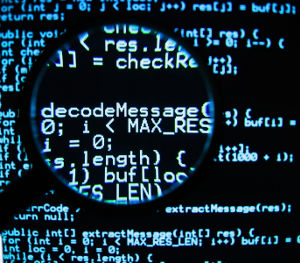We always talk about the latest technological advance, but we don’t often talk about how it all began. Since encryption is such an important part of infosecurity, let’s take a walk back through history.
According to Wikipedia, encryption “has long been used by the military and governments to facilitate secret communication. It is now commonly used in protecting information within many kinds of civilian systems. For example, the Computer Security Institute reported that in 2007, 71% of companies surveyed utilized encryption for some of their data in transit, and 53% utilized encryption for some of their data in storage. Encryption can be used to protect data ‘at rest’, such as files on computers and storage devices. In recent years there have been numerous reports of confidential data such as customers’ personal records being exposed through loss or theft of laptops or backup drives. Encrypting such files at rest helps protect them should physical security measures fail.”
Since the time cavemen started talking, there were secrets to be kept. At first, this was achieved by only allowing certain members of society to learn to read and write. It didn’t matter what was written because no one except a few could read it. But as the number of readers grew, different ways of sending messages had to be developed.
The Spartans of ancient Greece developed the first method. It was achieved by wrapping a piece of “paper” around a stick of a certain dimension. A message was written on it. The only way to retrieve the message was to have a stick of the same dimension and rewrap it in order to decode it. This method was the first Tranpositional Cipher. The same letters were used but the order was changed.
The Greeks were the first to use steganography. When Histaiaeus shaved the head of his messenger, he wrote the message on the messenger’s scalp and waited for the hair to regrow. Then the messenger was sent to the recipient, and his head was shaved again to reveal the message.
The method used by the Romans was called a Shift Cipher and entailed taking a message and shifting the letters of that message a number of set places in the alphabet. The modern day equivalent is ROT13.
Over time, as ciphers became more complicated and automated, mechanical and electronic devices were used not only to create messages but also to crack them. Sometimes it was just plain luck and cunning that resulted in the code being broken. If we never got our hands on the Enigma machine that the Germans created, who knows, World War II might have lasted longer. Or the outcome might have been different…a sobering thought?
The technology industry has grown by leaps and bounds and has embedded itself into everyday life – both professionally and personally – and yet, for all the technology that we’ve developed and depend on, let’s not forget, it all began with a stick.
Author

